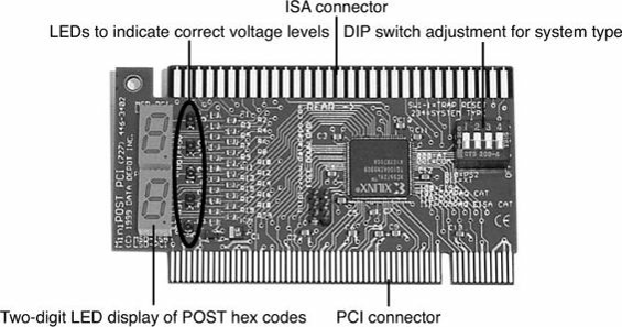Hardware Reference
In-Depth Information
Beep codes are used for fatal errors only, which are errors that occur so early in the process that the
video card and other devices are not yet functional. Because no display is available, these codes take
the form of a series of beeps that identify the faulty component. When your computer is functioning
normally, you may hear one or two short beeps when the system starts up at the completion of the
POST, although depending on the system, it may not make any sounds at all if things are normal. If a
problem is detected, a different number of beeps sound, sometimes in a combination of short and long
tones. Some implementations of UEFI firmware also use POST codes to report errors.
BIOS POST Checkpoint Codes
POST checkpoint codes are hexadecimal numeric codes written by POST routines to I/O port address
80h as each major step is begun. These are often simply called POST
codes
. These POST codes can
only be read by a special adapter card plugged into one of the system slots. These cards originally
were designed for system manufacturers to use for burn-in testing of the motherboard. Several
companies make these cards available to technicians; if you search for “post code card,” you will
find many that are available.
POST checkpoint codes can track the system's progress through the boot process from power-on right
up to the point at which the bootstrap loader runs (when the operating system load begins). When you
plug a POST code reader card into a slot, during the POST you see two-digit hexadecimal numbers
flash on the card's display. If the system stops unexpectedly or hangs, you can identify the test that
was in progress during the hang from the two-digit code. This step usually helps to identify the
malfunctioning component.
Originally, most POST reader cards plugged into the 8-bit connector that is a part of the ISA or
Enhanced Industry Standard Architecture (EISA) bus. The motherboards found in modern PCs have
no ISA slots, so obviously an ISA POST card won't work. Fortunately, the companies that make
POST cards make PCI or even PCI Express versions (see
Figure 20.1
). There are even Mini PCI and
Mini PCI Express cards available for testing laptop motherboards.
Figure 20.1. The PC Diag Inc PCISA FlipPOST diagnostics card works with both PCI- and ISA-
based systems, and it tests motherboard voltage levels.
AMI markets a USB-based diagnostic device called the AMIDebug RX to display checkpoint and
error codes for its AMIBIOS and Aptio 4.x firmware.




